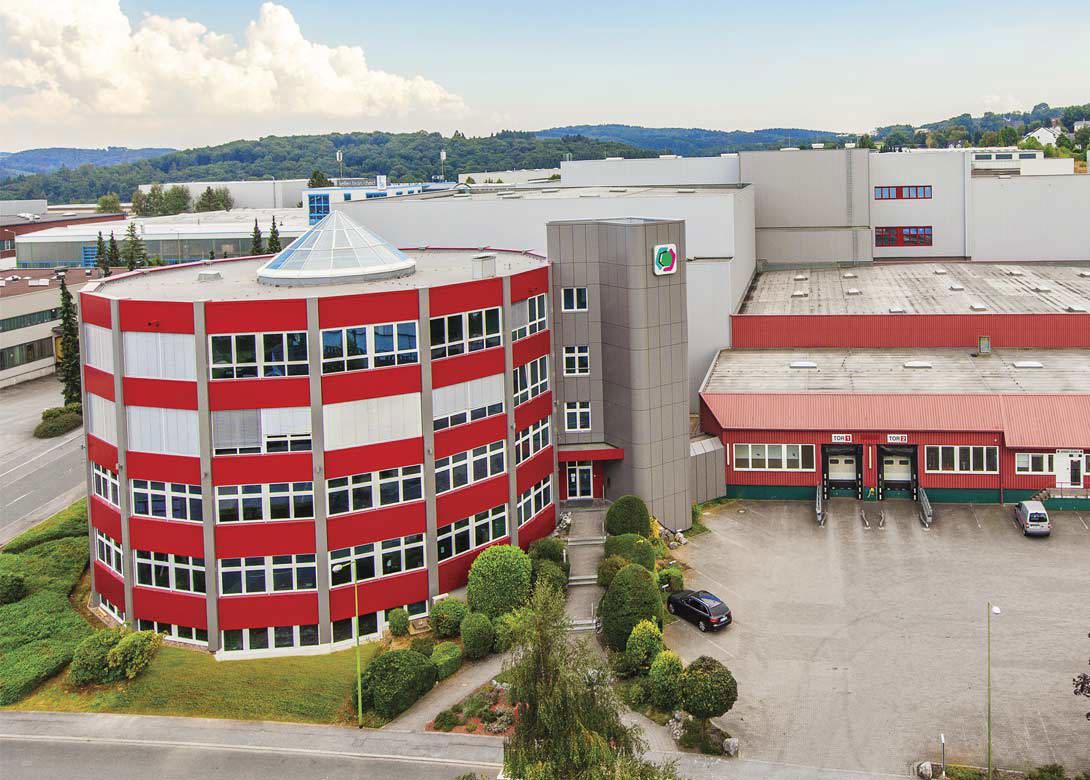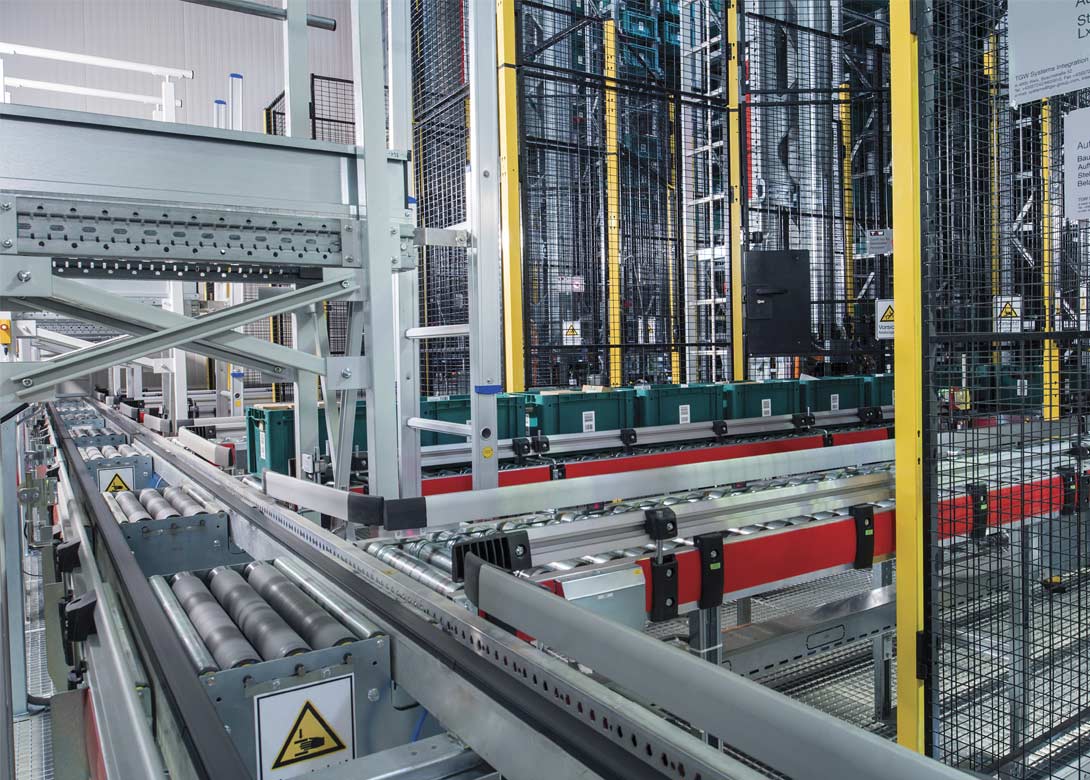Lederer – powered by efficiency
28 November 2016
With the ever growing demands of customers for quicker delivery and service, automated warehouses are becoming a vital tool for fastener distributors. Editor Will Lowry visited Lederer GmbH to find out how the recent addition of its automated warehouse has enabled the German-based company to further answer the needs of its customers.
For almost 50 years Lederer has used its customer orientated philosophy to ensure it is always providing products and service its customers require. Nowhere is this more apparent than its headquarters, which has grown and developed over the years to incorporate six different building extensions into one seamless operation. The most recent addition is an automated warehouse that became fully operational towards the end of 2015.
“The automated warehouse was necessary for efficiency and staying competitive within the market, as well as the simple factor that we needed more space,” explains Markus Gebehenne, marketing manager at Lederer. “Due to the ongoing demands of customers, and projections for the future, it became clear that an automated warehouse was vital if we were to continue to offer customers a complete service.”
The construction of the automated warehouse was particularly challenging because of the substantial differences in ground level compared to the existing buildings. “There is a difference of almost 6m between the existing building and the automated warehouse,” points out Markus. “Therefore at the design stage we had to give a lot of thought and time to the logistics layout to ensure it was practical.”
Now complete and standing at over 14m high, the automated warehouse covers around 1,100m2 (approximately 45m x 25m) and has 34,000 storage spaces. In addition to the racking there is also 1.5km of automated conveyors, as well as two escalators that help combat the difference in ground level – moving products up and down between the two different levels automatically. Over 300 boxes can be moved in and out of the automated warehouse within one hour, with four control centres monitoring the weight and dimensions of every box to guarantee they are suitable for storage.
“There are some restrictions regarding the size of products, for instance there are a few unusually shaped products that cannot be stored such as 3m threaded rod,” points out Markus. “Apart from this we can store almost all of our products – with a maximum load of 42kg for each box.”
One of the biggest challenges of introducing the automated warehouse was connecting the logistics software to Lederer’s existing software system. “When you have an automated warehouse it is vital you have a ‘live’ connection that always shows the correct stock and works seamlessly,” mentions Markus. “However, you can’t stop the software and install it, you have to introduce it whilst still reliably supplying your customers. It is like trying to change a tyre on a moving car.”
Lederer knew it was critical that its automated warehouse software was accurate and dependable, which is why it operated both systems in parallel for three months, until it was completely happy the new system was reliable. A key part in ensuring this reliability are two backup mainframes – one in the office and one in the logistics complex – which make sure the system is constantly online, even if one server goes down.
“The warehouse has been operating for a year now and we are really seeing the benefits,” reports Markus. “Speed, efficiency and flexibility have undoubtedly been the big positives. We are now able to store products, pick products, and prepare products for shipping a lot more effectively, which all combines to improving the internal process and getting the product ready quicker for delivery to the customer. Plus the amount of handling errors made has also reduced. If the product is stored properly then there can be no mistake in the picking process.”
Optimising the production process
The introduction of the automated warehouse also led to the company changing the layout of its incoming and outgoing areas to get a better flow and process throughout the warehouse. Now, all relevant incoming goods are placed into boxes and quickly moved to the automated warehouse.
“With all of the different expansions we have introduced over the years, we cover a large area and it is important the production flow is as efficient as it can be,” adds Markus.
This commitment has seen Lederer also improving its manual picking area. This means operators can be given the quickest and most effective route for picking orders – again speeding up the process. “Optimising the commissioning process is vital as a distributor and we are always looking at how we can do things better,” comments Markus. “For instance, other developments we have introduced include 14 new packing stations, which have enabled us to reduce the manual work required by half and also helped our packing be as accurate as possible.”
Lederer has also spent the last year adding another two levels to the top of its office space. “Previously we were very tight for space,” comments Markus. “It has been a noisy process, but it has definitely been worth it.”
Meeting requirements for all products
Lederer has a vast product range that includes over 350 different product groups in normed and standardised fasteners made of stainless steel – including rods, washers, bolts, nuts, chains, sailing equipment (stainless steel), as well as products for the railway and solar industries.
Whilst most of the products are standard parts – DIN, ISO and L-parts (Lederer parts) – the company can also supply special articles made to drawings or samples. Supplying nearly 1 billion articles to customers last year, Lederer is traditionally known for its stainless capabilities. However, it is also able to offer products in other materials and finishes.
“In total we have around 60,000 – 65,000 different articles, with around 22,000 normed and standardised items made of stainless steel,” mentions Markus. “The remainder is a mix of carbon steel, zinc plating and other materials. This shows we can meet the requirements for all products.”
A key factor for all the products Lederer supplies is the quality, which is guaranteed by the company’s in-house quality department in Ennepetal and its Fastener Quality Centre (FQC) testing facility in Shanghai, China, which is co-owned with Fastbolt GmbH. “The testing centre in Shanghai is very beneficial to us, as it enables us to carry out numerous tests and check the quality of the products at the source,” says Markus. “This ensures we receive the very highest quality products here at Ennepetal.”
In addition to the quality of the products, the service level provided is also important. “In today’s society the speed of business is increasing and customers want everything straight away,” states Markus. “If you cannot provide a quick service then you risk losing the business. Our online shop is very important to us, as it means we are able to be online with our customers and we can offer a quick service whilst providing the products they need.”
To add to the online shop Lederer also offers PDF catalogues that can be downloaded from the website. Registered customers can click on an article or product group in the PDF catalogue and automatically be given the price and availability information.
Showing its capabilities
Introducing an automated warehouse can be a tricky process, but Lederer has done it in a logical and structured manner. When combined with other investments, and process enhancements, the result is a company that is firmly establishing itself as a key player in the fastener distribution market.
“Most customers don’t realise how big our operation now is,” concludes Markus. “That is why we are inviting customers to come and see us – to show off our modern facility and so that they can see the complete capabilities of Lederer.”
www.lederer-online.com


